
Over the Sandstone Hills and back (Part Four)
The next day, after looking around in the town of Ficksburg for an hour or two, we did indeed set off for Senekal to see a new area. The potholed road wound its leisurely way through the koppies and valleys, the traffic was almost non-existent, and we took our time. We made a number of stops to look at birds, farmhouses, farm fields and the beautiful hills. The problem of poor light had sadly become worse, and we peered around us below a near-blinding white sky. Only later in the day were we to see a small improvement. Most of the farms seemed to be beef ranches, with occasional mealie or maize lands here and there. The most colourful spectacle we found was a field of ripe sunflower nodding in the gentle breeze.

Here, too, the grass along the road edges was so tall that I couldn't see over it, ending up by climbing onto the Pathfinder for the series. Well worth the effort, I think. My next car will be a London double-decker bus for photography in the Free State.
We decided that on the return trip we'd look for back roads that would get us closer to the hills, and also prove more interesting. And so we set off once again for Senekal. The countryside was changing now, the hill shapes different from those closer to Lesotho, as well as being farther apart. There were long expanses of grassland with Cosmos flowering everywhere. Herds of cattle grazed peacefully not bothering to watch us go by.
We had no proper map with us, so were surprised to stumble upon a hamlet bearing the proud name of Rosendal. To the south of the main road was a substantial township comprising orderly rows of RDP houses, and the obligatory external long-drop toilets dotted all around. The village itself was across the road, and I was curious to find out if there was yet another sandstone church. There was, but it was the strangest little town we'd seen.
It was neatly laid our in rectangles bounded by dirt roads, very few properties showing any signs of development. Only near the church was there a cluster of houses, mostly in the inevitable sandstone, the rest being just an uninterrupted grid demarcated by the roads. Most properties were fenced, but what struck us forcibly was that all the roads were clearly and newly signposted as if it were possible to get lost there, and all the roads had been provided with very adequate street lighting.
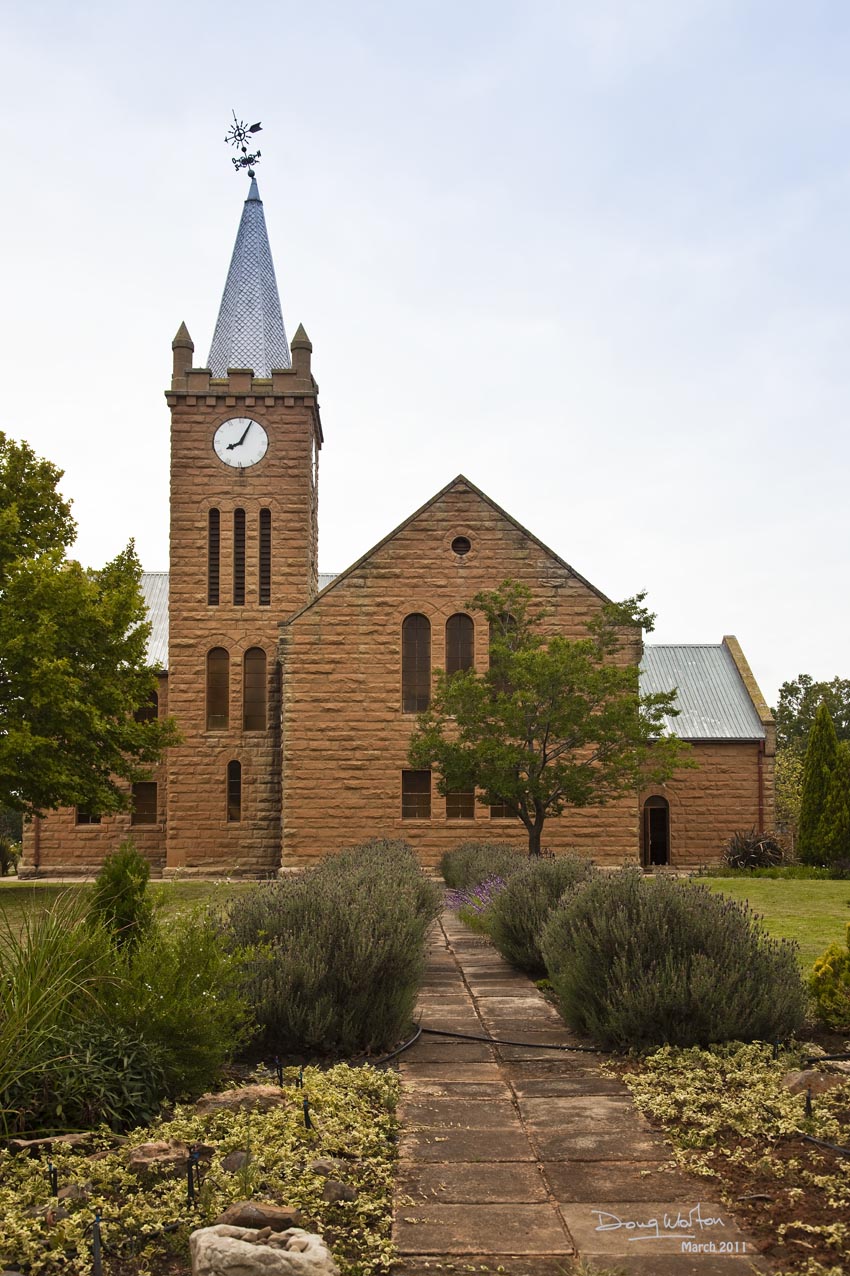
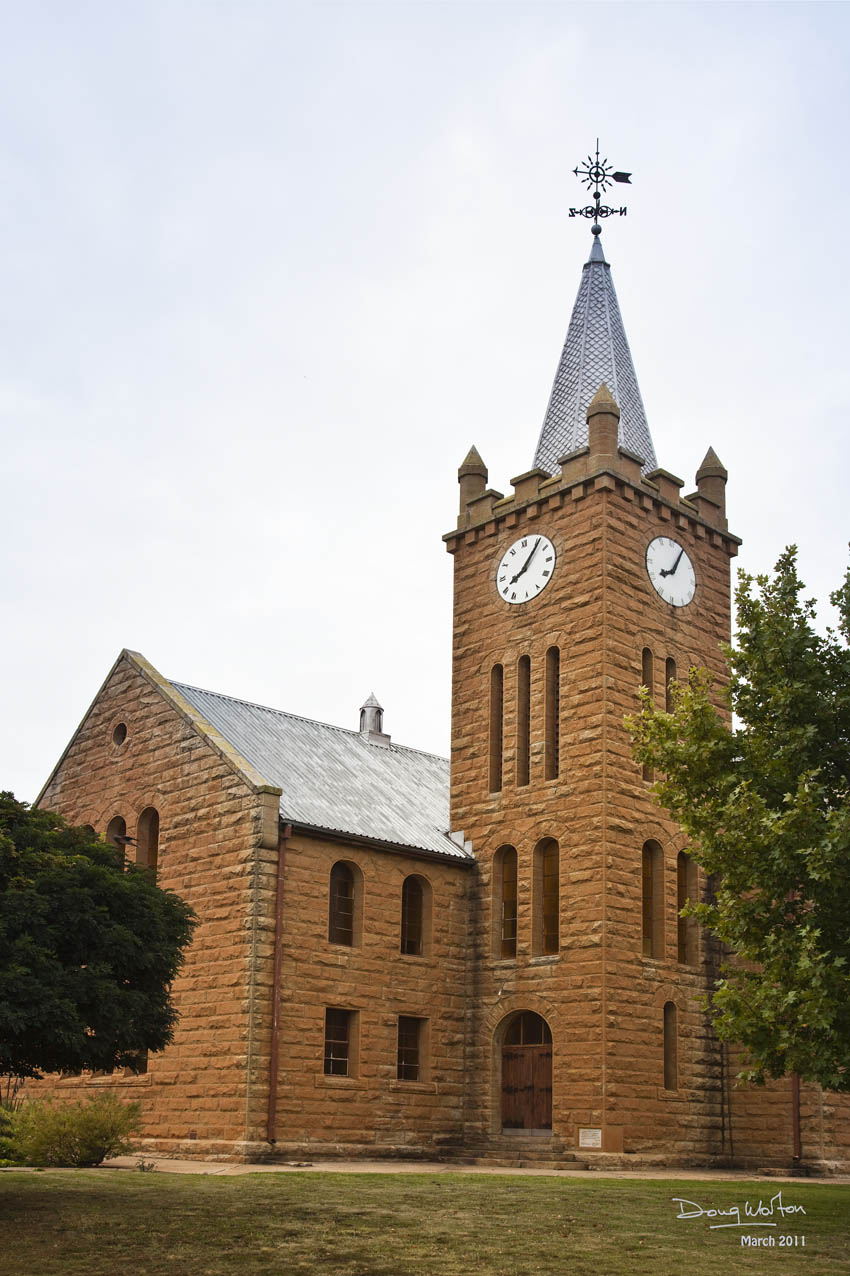
The Dutch Reformed Church was another magnificent structure, although it seemed there was no-one intrepid enough to scale the steeple to set the weather vane upright again. I didn't volunteer either. In the gardens I found this small monument to the "Children of the Great Trek," who'd died during that time.
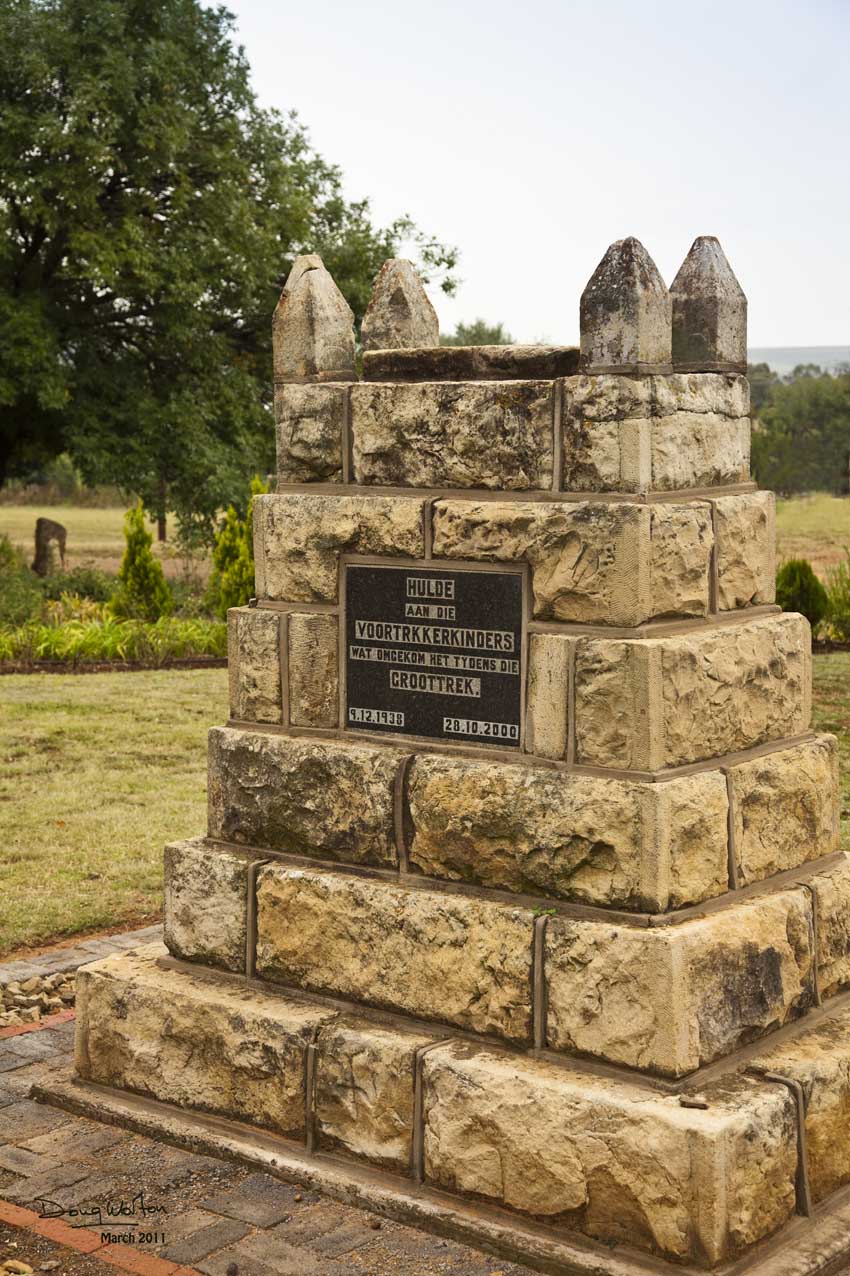
Life must have been tough around here 170 years ago. It still looks tough.
On a street corner abutting the church land was what looked like a messy, disorganised junk yard. A rusty, dilapidated sign advertised "Antiques and Collectibles." In Rosendal? Antiques? Grandiose flights of fancy, I was sure, so I parked off and Terri and crossed a threshold to be transported back a hundred years. We found ourselves in a shop like those we'd known when we were small. There were tiered, round-fronted glass display cabinets filled with a selection of sweets and candies that we recalled from our childhood. One section of the shop was pure history, and everything was still for sale, including the sweets, soaps, polishes, packets of flour, tins of baking powder and minerals like Hubbly Bubbly. It was completely authentic.
We fell to chatting with the owner who asked me not to take photos as she'd recently had a camera crew there to record that part of the shop, the idea being that it was to become a registered museum. That was a disappointment as I know that all of you reading this post would have been agog. She told us that once the status of the shop changed, all the merchandise would be part of the permanent display and would no longer be offered for sale. We spent a nostalgic hour there. The entire display had been in a trading post in Lesotho, and she'd bought it and moved it, lock, stock and barrel, quite literally, to Rosendal.
There were the usual rusty cooking utensils and chamber pots strewn about the rest of the establishment among the collection of still-running motor cars and several creaking windmills, with an interesting section displaying and selling traditional weaving and fabrics.
We found a blacksmith's forge just along the road, and a small art gallery housing the work of a few quite prominent Free State artists. Here it was that Terri met a girl she'd briefly worked with at the University in Maritzburg in the 1980's, who'd finally relocated permanently to Rosendal from Johannesburg after being a weekend visitor for a number of years. She was completely in love with the town despite the absence of shops apart from a filling station and a small farm supply depot. Of course there are no resident professionals there and a visit to the doctor involves a forty kilometre trip to Ficksburg. The resident population of the town is about sixty, with some ten thousand mostly unemployed black folks in the township across the main road. It's difficult to imagine a more disproportionate social and demographic make-up.
We'd spent far longer than intended in Rosendal, so scrapped the rest of the trip to Senekal, turning back to Ficksburg, looking all the while for promising side roads and byways. We found a good one quite soon, and it led us to extensive farmlands and very remote places.
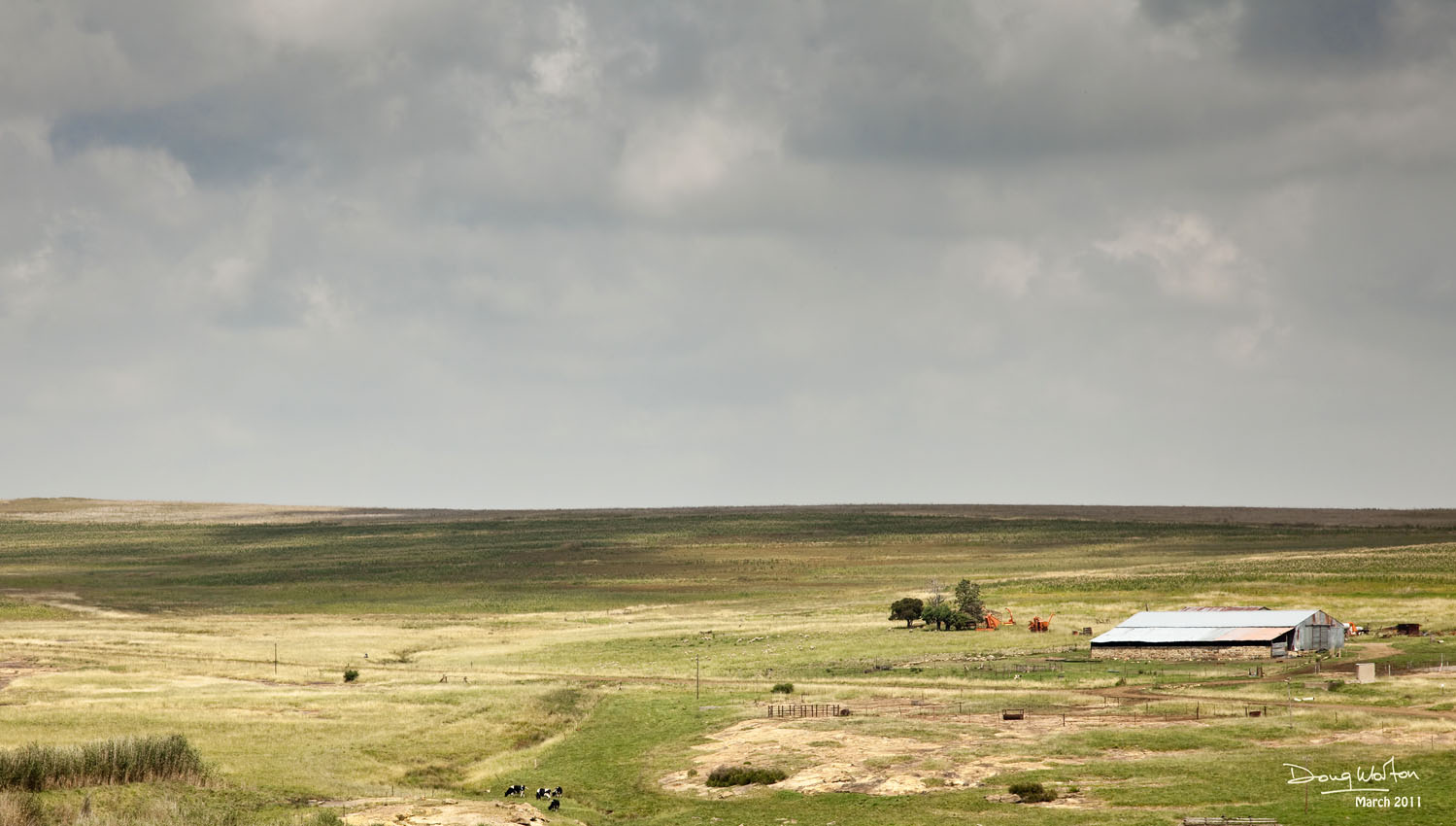
There were maize fields that had been decorated with Cosmos for our visit.
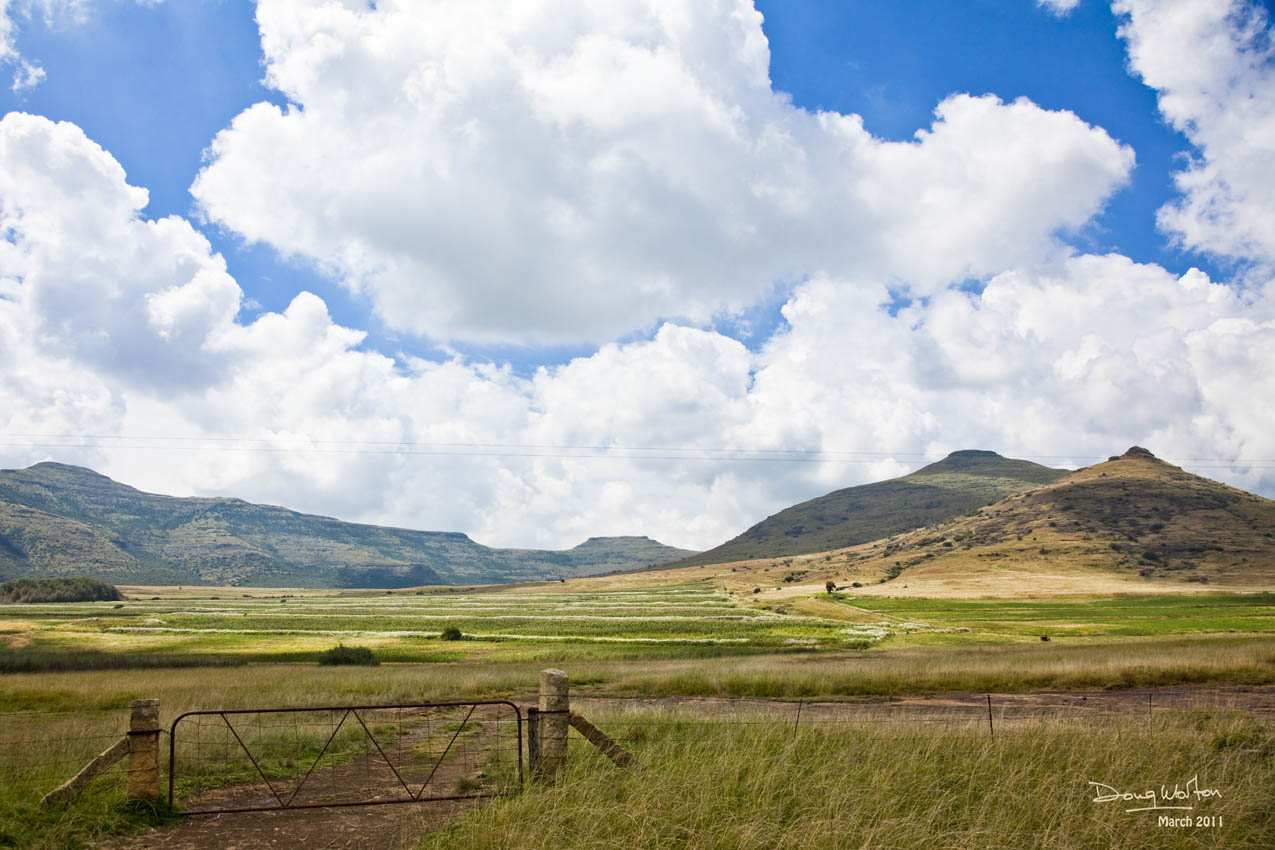
Although sandstone is used extensively for buildings,
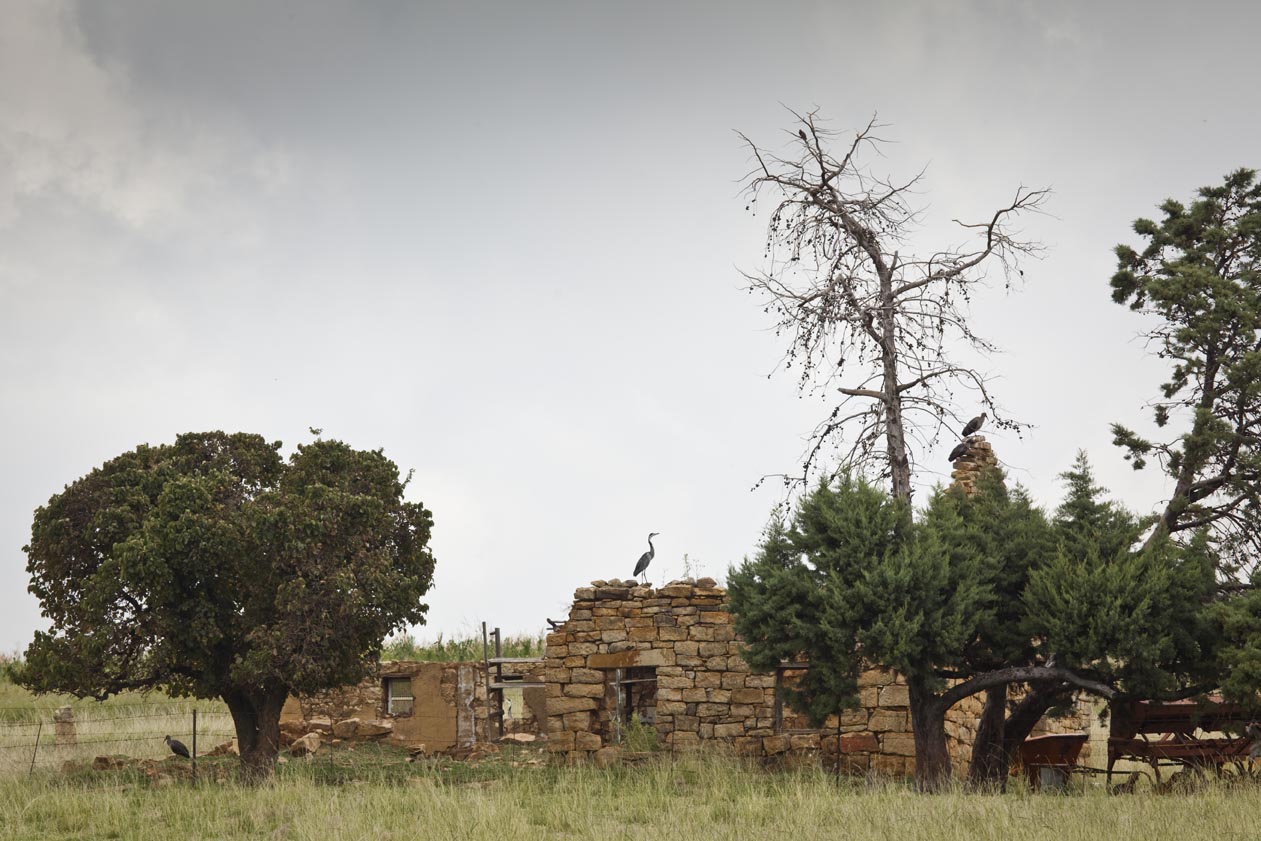
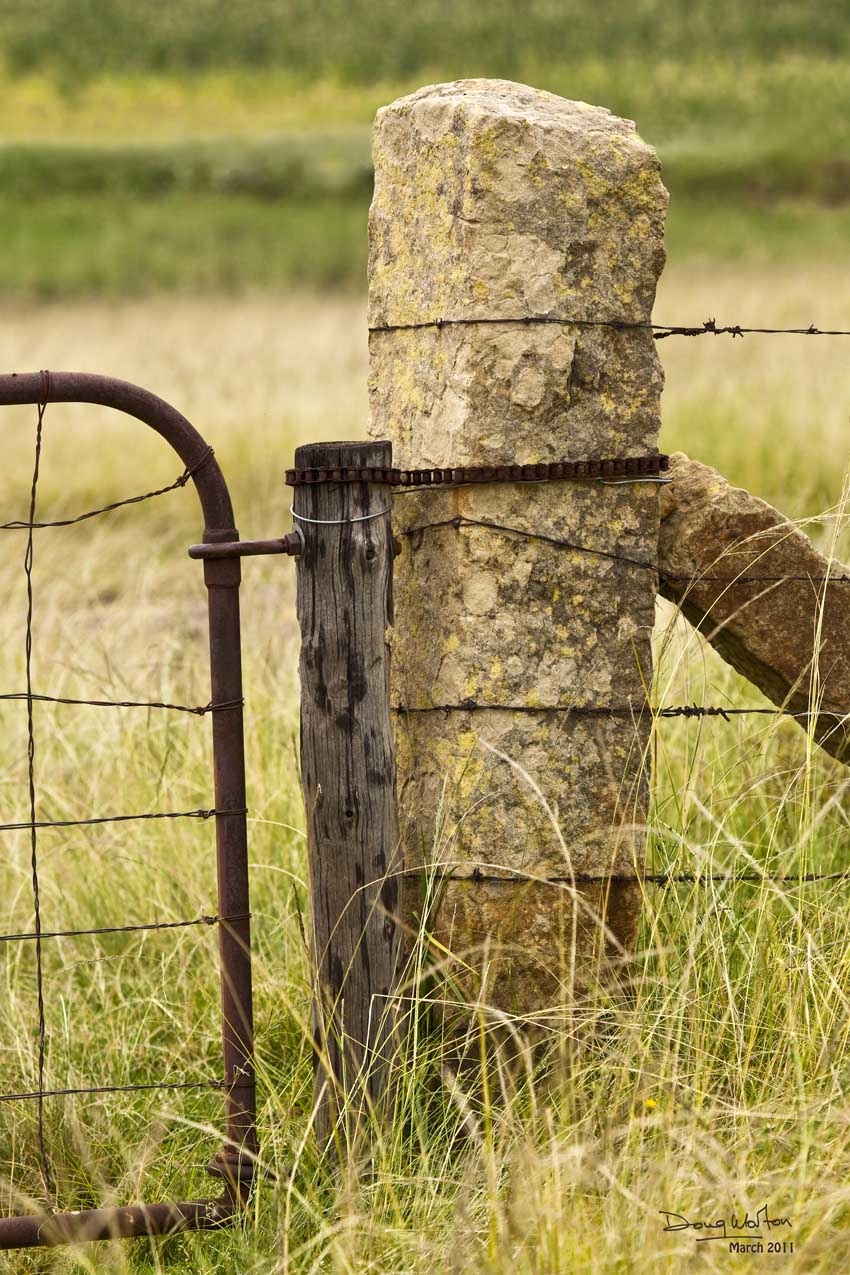
it has some other interesting uses, combined with ingenious use of whatever else is at hand.
We gradually drew closer to the sandstone cliffs that had eluded us that day, and found ourselves amidst some really dramatic scenery.
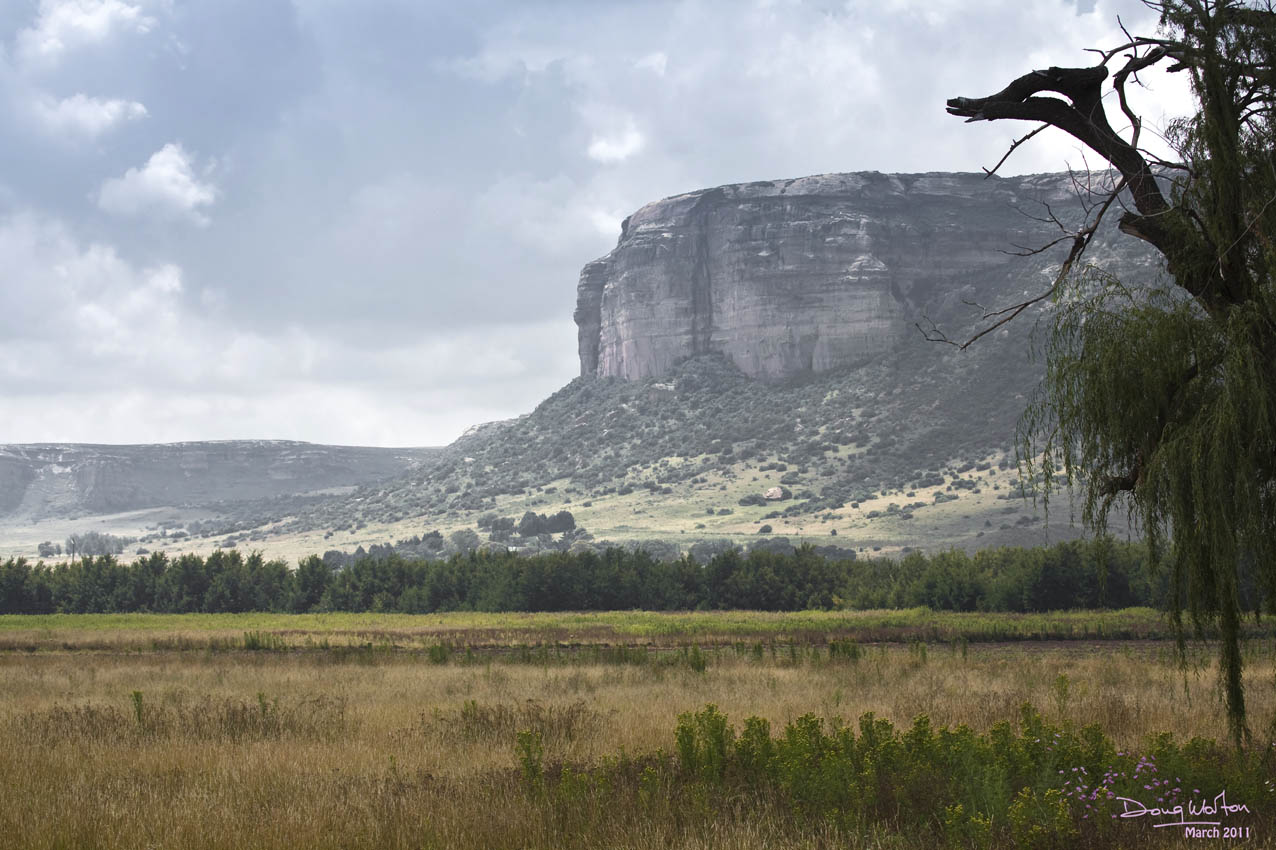
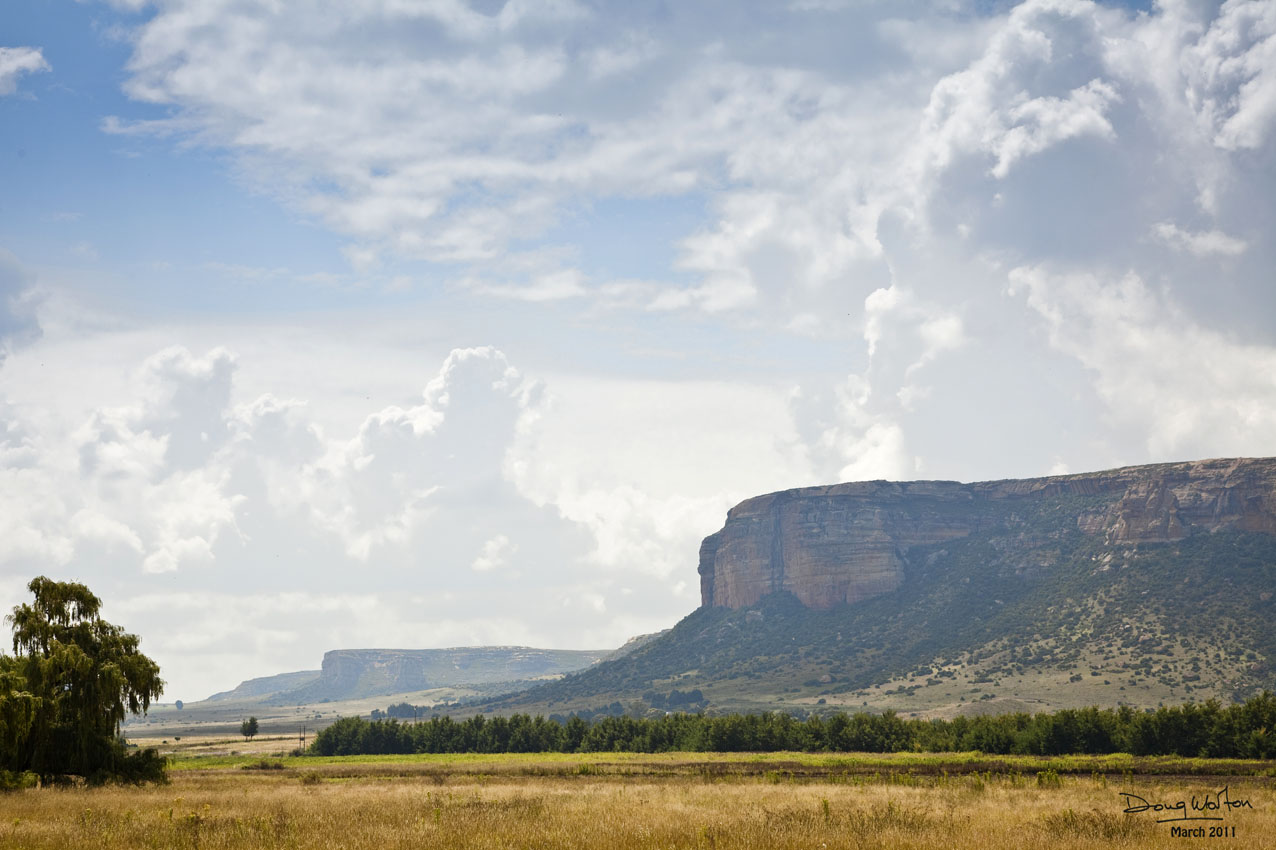
.........and farther along the dusty road that still had many water-filled hollows from the previous night' rain,
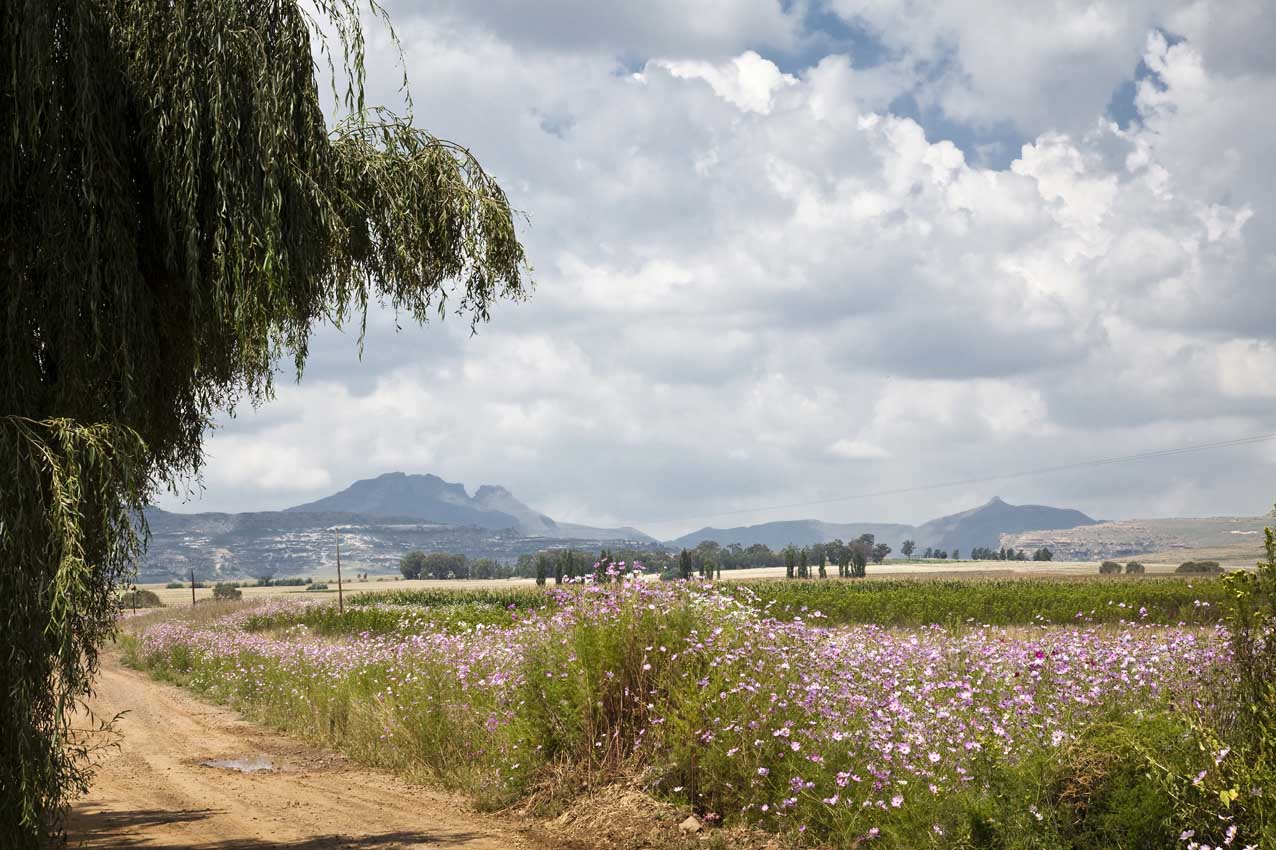
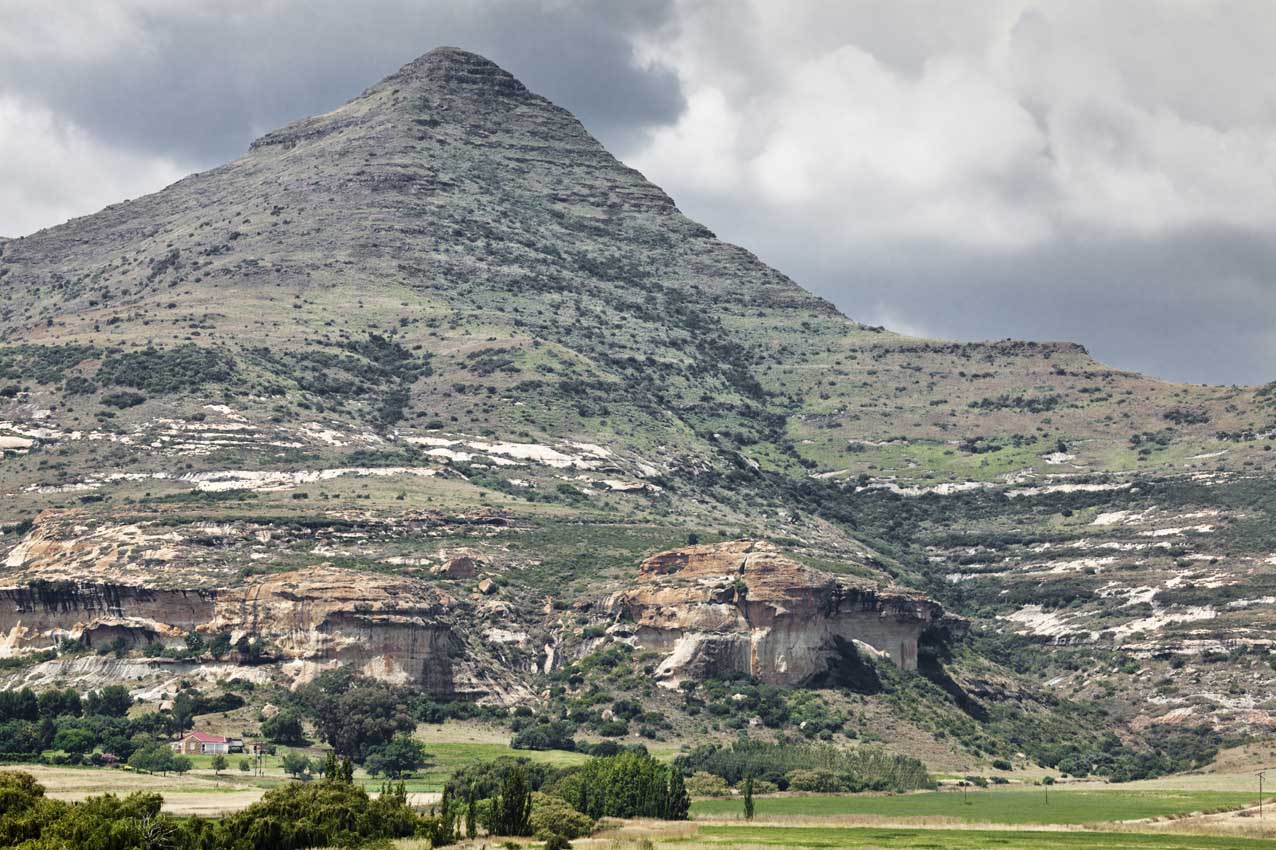
with farmhouses tucked into the folds of the mountains, nearly invisible in the distance.
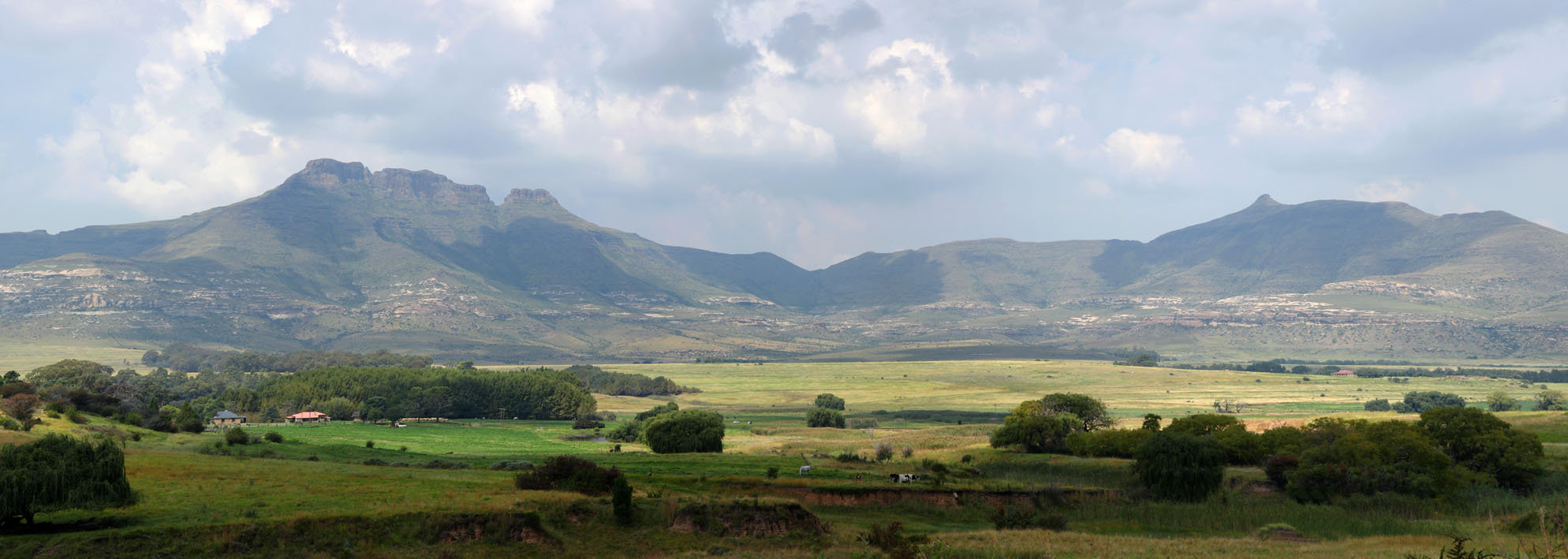
By now we felt quite lost, despite having been given confident directions by a gate guard at a very secluded nature reserve. We seemed to be travelling in the wrong direction completely, and I began to worry about the guard's mention of the road going eventually to Bloemfontein which was definitely not where we wanted to be. Soon, though, we were back on the road to Ficksburg and another of Ina's wonderful dinners and a few glasses of red.
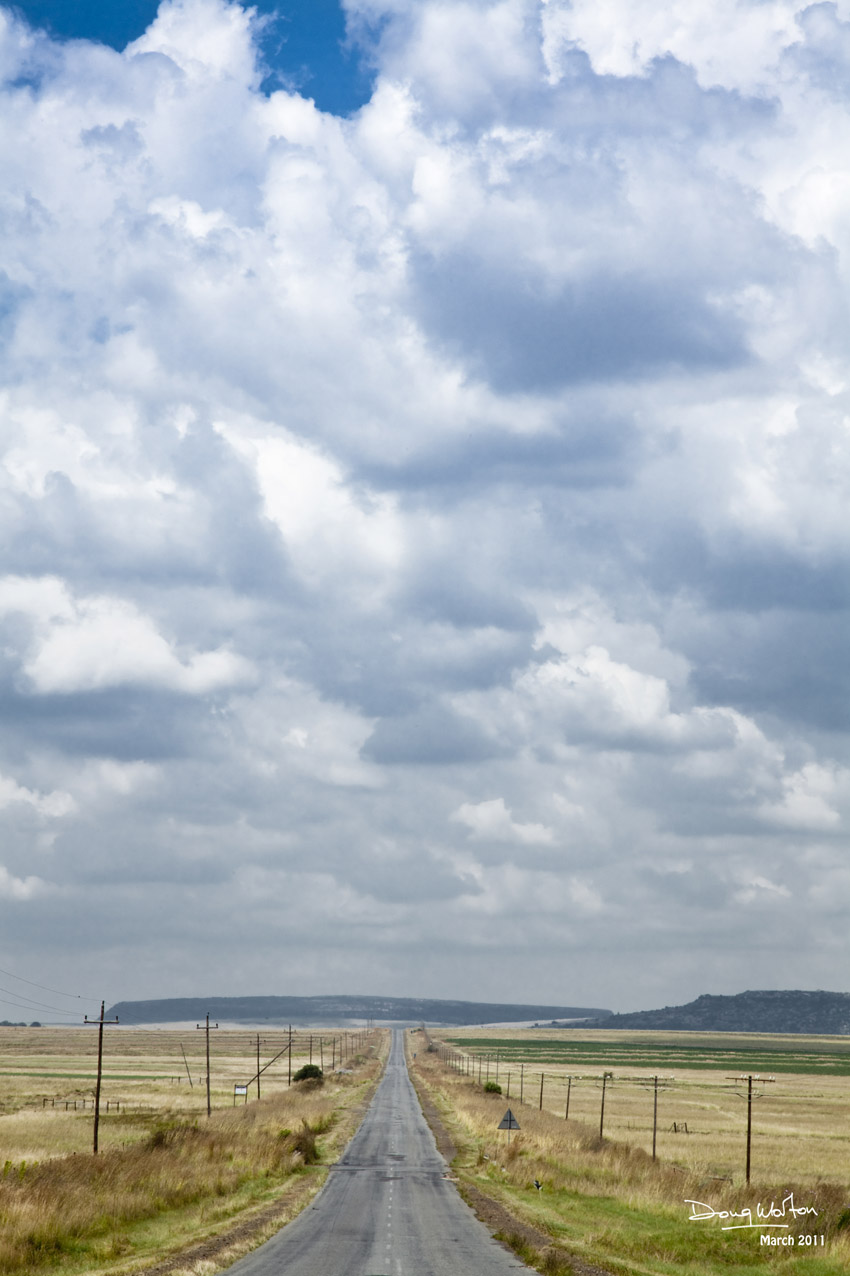
Our friend in Rosendal had asked if we'd been to Gumtree and then tried to explain that it was the tallest sandstone structure in the country, to be found somewhere between Ficksburg and Clocolan. It sounded to interesting to miss, and we had one day to go before heading home.
It was to be the last day's project, and a memorable one too. The story of the mill at Gumtree will be the final episode of our Free State odyssey. That's for next time.
Comments
Is it Next Time yet? - Excited about the mill at Gumtree but as you said, that's for next time. This is another fantastic blog. Great shots, but you were let down by that light. I felt strangely moved by the monument for the children - probably an acquired weakness (one of many) since having my girls. Very interested to hear more about Rosendal, and to see pictures. I can't believe a place like that exists. I think I would feel incredibly vulnerable living there.
Secrets of the Free State - We have so many unexplored parts of the country. Your trip really was one of discovery. I share Shayne's thought of a pic or two of Rosendal - both sides of the track if you have. Loved the shot of road to........? Also the panoramic view on the photo just above. Could not help thinking of years gone by when looking at the photo of the derelict sandstone farmhouse - what a shame.